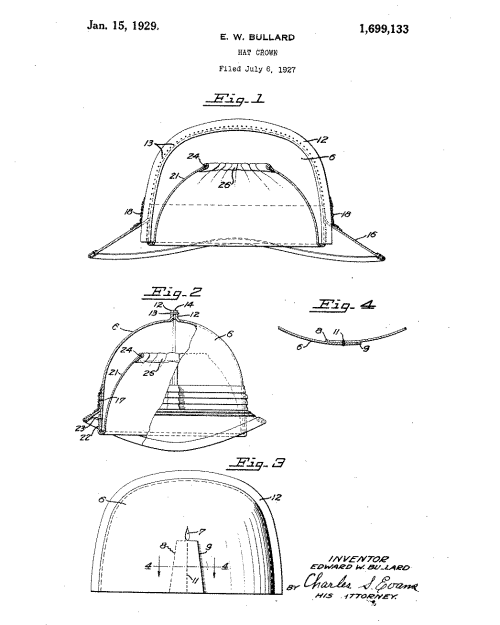Colorful, vibrant, and always visible, the hard hat symbolizes progress. It has become synonymous with safety and emblematic of the construction industry. But how did the hard hat come to be?
In the late 1800s, miners routinely performed the dangerous tasks of blasting and removing large quantities of rock. Safety devices such as lamps and harnesses were available, but nothing had been invented to protect miners’ heads. With increasingly hazardous conditions and growing workplace fatalities, workers were in dire need of a solution. But what would the inspiration be?
Many soldiers in World War I owed their survival to the doughboy helmet, a metallic piece of bowl-shaped headgear that saved countless lives in battle. This helmet was considered for use in the mines but ultimately ruled too large and bulky for the narrow fissures of rock. Due to other limitations such as conductivity and cost of metal, the doughboy proved less than ideal for occupational use.
The advent of the present-day hard hat began with Edward Bullard, a veteran with a mission to ensure the safety of mine and construction workers. Deviating from the usual metallic helmet, Bullard designed a hat from heavy duck canvas and coated it in shellac—a resinous material—to increase durability. This prototype also featured a network of straps and supports to help absorb the impact of blunt force.
In 1919, Bullard designed a new model inspired by the doughboy. He innovated upon the bowl design, form-fitting his canvas hat to a human head and attaching a leather brim before shellacking. Once introduced to workers in the field, this product met with wild acclaim throughout the mining and construction industries. Bullard soon produced many variations of the original hat, one of which featured a carbide-lamp attachment for visibility in the dark.
Despite its popularity, the hat wasn’t yet required for construction workers. In 1931, the press published photographs of workers wearing hard hats during the construction of the Hoover Dam. Then, in 1933, the construction of the Golden Gate Bridge marked the first mandatory use of the hats as a safety precaution. As word spread, more and more workers began to wear them.
In the early 1950s, the hat’s composition changed from canvas to thermoplastics and fiberglass. Later, in 1960, the hard hat was reconstructed out of polyethylene, or plastic; this is the same material used today. The original plastic hard hats sold for $3 at the time, or $30 in the current market. Over time, the hard hat has added more safety features such as increased padding, chin straps, and supportive head harness systems. Today, the Occupational Safety and Health Administration (OSHA) requires all staff on a construction site to wear hard hats.
Edward Bullard passed away in 1963, having never known the full impact of his contribution. On May 5, 2022, he was inducted into the National Inventors Hall of Fame in Washington, DC. As more adaptations and refinements of the hard hat emerge, it bears remembering that Bullard’s genius transformed the construction industry and set standards for head protection for decades to come.
When Exactly is a Hard Hat Required?
According to OSHA, “An OSHA-approved hard hat is a hard hat that meets ANSI Z89.1. 29 CFR 1910.135(b)(1) and 29 CFR 1926.100(b)(1) state that head protection must meet the 1997, 2003, or 2009 editions of ANSI Z89.1, or be shown to offer equivalent or better protection.”
In other words:
- when objects or debris might fall from above
- when employees may strike their heads against fixed objects such as supports or beams
- when workers’ heads may be exposed to electrical hazards
Hard Hat Types:
The two types of hard hats are defined by which area(s) of the head they protect:
- Type I offers protection to the top of the head and is commonly used in the United States.
- Type II offers protection to the top and sides of the head and is commonly used in Europe.
Hard Hat Classes:
The three classes are based on the level of protection they provide from electrical hazards.
- Class G (General) hard hats are rated for 2,200 volts.
- Class E (Electrical) hard hats are rated for 20,000 volts.
- Class C (Conductive) hard hats do not offer electrical protection.


